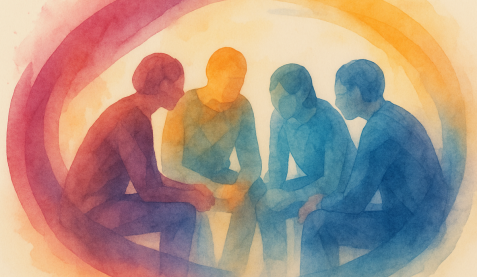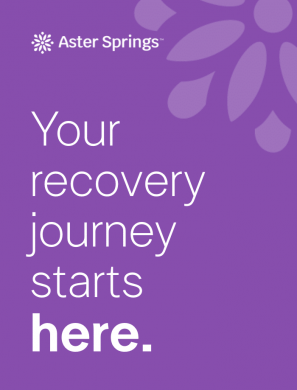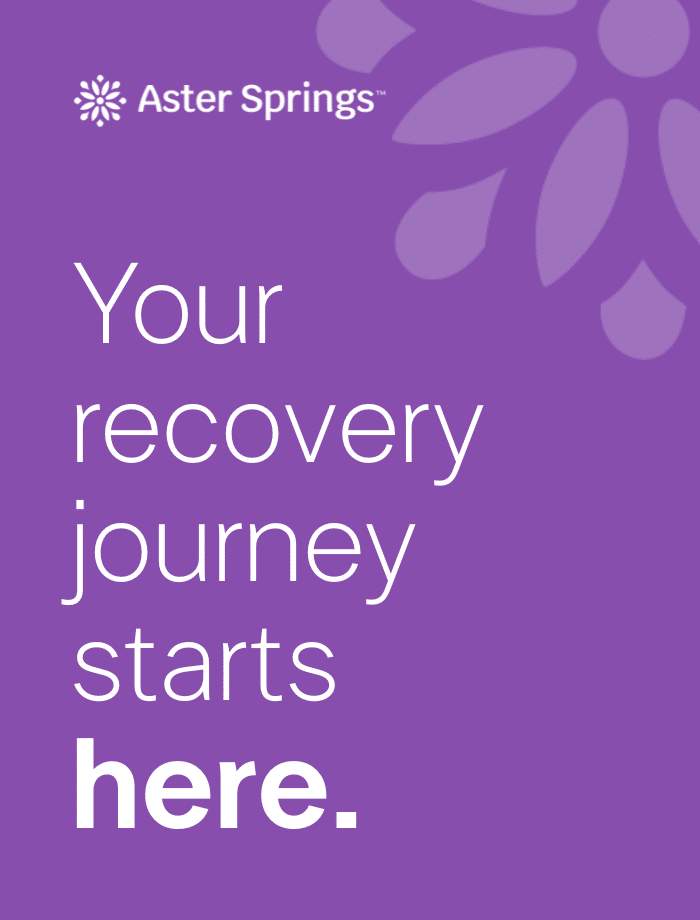Anorexia nervosa is a severe, life-threatening eating disorder that affects millions of individuals and families worldwide. Recovery requires more than physical stabilization — it involves rebuilding trust with one’s body, restoring nourishment, and addressing the deep emotional roots that drive restrictive eating behaviors.
For many, outpatient care becomes an essential step in the healing process. While hospitalization or residential treatment can be necessary for medical safety and stabilization, outpatient programs allow individuals to continue healing while gradually reintegrating into their daily lives. This balance between structure and independence can help sustain recovery in powerful, practical ways.
What Is Outpatient Care?
Outpatient care refers to structured eating disorder treatment provided outside of a hospital or residential setting. It’s typically recommended once someone has achieved medical stability but still needs ongoing, specialized support for recovery.
Outpatient treatment can take several forms, ranging from weekly therapy sessions to more intensive, multi-day programs. The most structured forms of outpatient care include:
Partial hospitalization programs (PHPs) – Clients attend treatment most of the day, five days per week, but return home in the evenings.
Intensive outpatient programs (IOPs) – Clients participate several days per week for a few hours per day, often while attending work or school.
- Virtual intensive outpatient programs (V-IOPs) – Clients receive the same comprehensive treatment they would get in an in-person IOP program — just delivered online through secure telehealth platforms.
Each program provides consistent therapeutic support, meal supervision, and medical monitoring — key components for maintaining progress after higher levels of care.¹
Who Benefits from Outpatient Treatment?
Outpatient care is ideal for individuals who are medically stable, motivated for recovery, and ready to practice coping skills in real-life settings. It allows clients to remain connected to their families, work, or education while still receiving structured, multidisciplinary support.
Several factors determine the appropriate level of outpatient care:
Age + developmental stage
Family or social support system
Distance from the treatment center
Severity of symptoms and medical needs¹
Clinicians carefully assess these factors before transitioning someone from inpatient or residential care to an outpatient setting.
A Typical Day in Outpatient Treatment
The structure of outpatient care varies depending on the program, but most include a combination of therapy, nutrition education, and supervised meals.
For example, individuals in day treatment (PHPs) often attend treatment four to five days per week. Their schedule may include:
Group and individual therapy sessions
Nutritional counseling and meal support
Skill-building workshops focused on body image, self-esteem, and relapse prevention
Supervised meals and snacks during the day, with additional meals completed at home
School support for adolescent clients enrolled in treatment programs²
These programs provide continuity of care, offering enough structure to maintain accountability while gradually increasing independence.
How Outpatient Care Supports Recovery from Anorexia Nervosa
Outpatient care plays a vital role in bridging the gap between hospitalization or residential treatment and fully independent living. It helps individuals practice recovery in the real world while remaining supported by a specialized clinical team.
1. Building Coping + Life Skills
Recovery isn’t just about food — it’s about learning how to live fully again. Outpatient programs help individuals manage real-world challenges like:
Navigating social situations and shared meals
Returning to work or school while maintaining self-care routines
Planning and preparing balanced meals
Managing emotional triggers and stress
Through continued therapy, clients develop resilience, self-awareness, and practical strategies to prevent relapse.
2. Encouraging Flexibility + Autonomy
Outpatient programs provide clients with the opportunity to apply skills in a less controlled treatment setting. They can practice balanced eating at home, participate in social activities, and manage setbacks with the guidance of a clinician. This transition helps strengthen confidence and autonomy while reinforcing accountability.
3. Providing Family + Community Support
Many outpatient programs incorporate family therapy to help clients’ loved ones understand the challenges of anorexia and learn how to offer appropriate support. Family involvement not only enhances accountability but also rebuilds trust and communication within the household.²
Multidisciplinary Care in an Outpatient Setting
Effective outpatient treatment relies on a team-based approach, with professionals who understand the complexities of anorexia nervosa. Clients typically work with:
Therapists or counselors trained in cognitive behavioral therapy (CBT), dialectical behavior therapy (DBT), or family-based therapy
Registered dietitians who specialize in eating disorder nutrition
Psychiatrists or nurse practitioners for medication management
Medical staff to monitor vital signs, weight, and overall physical stability
Group facilitators and case managers to ensure coordinated care
This integrated model allows clinicians to address not just food and weight, but also contributing factors like co-occurring mental health issues, perfectionism, trauma, and distorted body image — core drivers of anorexia.³
Challenges of Outpatient Treatment
While outpatient care is an effective and empowering phase of eating disorder recovery, it’s not without limitations.
1. Risk of Relapse or Setback
Anorexia nervosa is a chronic and sometimes relapsing condition. If symptoms worsen — such as sudden significant weight loss or medical instability — clients may require a return to inpatient or residential treatment for stabilization.³
2. Accessibility Barriers
Those who live far from treatment centers or lack reliable transportation may struggle to attend frequent sessions required by higher-intensity outpatient programs. In rural areas, specialized outpatient programs may be limited.⁴
At Aster Springs, we recognize the challenges and stress that housing concerns can bring to families and individuals seeking treatment. Our treatment centers are located in areas where nearby housing is more abundant, and we offer guidance on potential housing options for clients needing PHP or IOP treatment.
3. Insurance + Financial Constraints
Insurance coverage for outpatient care varies widely. For some families, the combined costs of treatment sessions, transportation, and time away from work can create added stress.
4. Motivation + Consistency
Outpatient care requires a high level of personal commitment. Clients must follow meal plans, attend therapy consistently, and apply coping skills independently. Without consistent attendance or accountability, progress can slow down or halt entirely.
Even with these challenges, outpatient treatment remains a powerful and practical tool in long-term recovery. It allows individuals to build stability while regaining confidence and independence in a real-world context.
The Role of Outpatient Programs in Lifelong Recovery
Outpatient care is often the bridge between surviving anorexia and truly living beyond it. With ongoing support from therapists, dietitians, medical providers, and a close recovery community, individuals can learn to trust their bodies again, reconnect with values outside of anorexia’s rituals and restrictions, and embrace a more flexible, balanced relationship with food.
At Aster Springs, our specialized partial hospitalization and intensive outpatient programs are designed for individuals in the recovery phase of anorexia nervosa. These structured yet supportive settings provide the therapeutic consistency, clinical expertise, and compassionate care needed to sustain recovery and strengthen independence.
While each journey is unique, recovery offers the opportunity to find purpose, connection, and confidence beyond the limits of an eating disorder. With the proper support, lifelong healing is not only possible — it’s within reach.
Find Hope + Healing at Aster Springs
If you or someone you love is working toward recovery from anorexia, Aster Springs offers evidence-based outpatient treatment that supports both emotional healing and lasting change.
Take the next step toward recovery. Contact our dedicated admissions team today to learn how our compassionate team can help you build stability, restore balance, and reclaim a life rooted in nourishment and self-worth.
References
Cowden, S. (2020). How outpatient therapy is used for eating disorders. VeryWellMind. https://www.verywellmind.com/how-outpatient-therapy-is-used-for-eating-disorders-5191622
Adrianne. (n.d.). What is intensive outpatient treatment for eating disorders? Centre for Discovery.
Frostad, S., & Bentz, M. (2022). Anorexia nervosa: Outpatient treatment and medical management. World Journal of Psychology, 12(4), 558–579.
The Monte Nido Centre. (n.d.). Can outpatient eating disorder treatment really work? https://www.montenido.com



